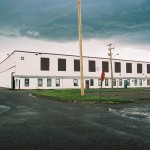Please note: Major cities such as Toronto, Ottawa, Halifax, Vancouver and Victoria had numerous small establishments that contained anywhere from single buildings, some leased, to multi-building establishments outside of the main bases for a variety of functions such as administrative, residential, supply, communications or coastal defence. I would like to profile all of them here eventually, but for now I am mainly concentrating on major establishments.



















30 pings
Skip to comment form ↓